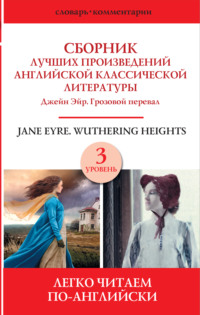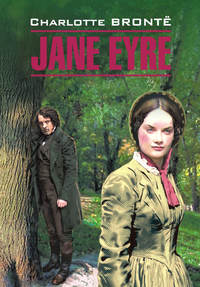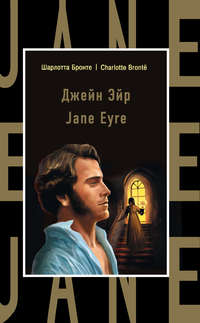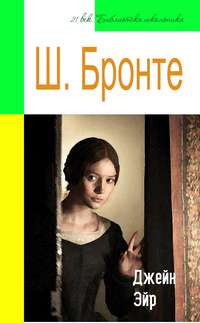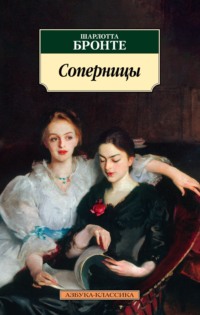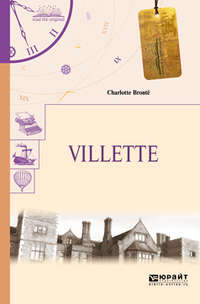
Полная версия
Jane Eyre

History of Collins
In 1819, Millworker William Collins from Glasgow, Scotland, set up a company for printing and publishing pamphlets, sermons, hymn books and prayer books. That company was Collins and was to mark the birth of HarperCollins Publishers as we know it today. The long tradition of Collins dictionary publishing can be traced back to the first dictionary William published in 1824, Greek and English Lexicon. Indeed, from 1840 onwards, he began to produce illustrated dictionaries and even obtained a licence to print and publish the Bible.
Soon after, William published the first Collins novel, Ready Reckoner, however it was the time of the Long Depression, where harvests were poor, prices were high, potato crops had failed and violence was erupting in Europe. As a result, many factories across the country were forced to close down and William chose to retire in 1846, partly due to the hardships he was facing.
Aged 30, William’s son, William II took over the business. A keen humanitarian with a warm heart and a generous spirit, William II was truly ‘Victorian’ in his outlook. He introduced new, up-to-date steam presses and published affordable editions of Shakespeare’s works and Pilgrim’s Progress, making them available to the masses for the first time. A new demand for educational books meant that success came with the publication of travel books, scientific books, encyclopaedias and dictionaries. This demand to be educated led to the later publication of atlases and Collins also held the monopoly on scripture writing at the time.
In the 1860s Collins began to expand and diversify and the idea of ‘books for the millions’ was developed. Affordable editions of classical literature were published and in 1903 Collins introduced 10 titles in their Collins Handy Illustrated Pocket Novels. These proved so popular that a few years later this had increased to an output of 50 volumes, selling nearly half a million in their year of publication. In the same year, The Everyman’s Library was also instituted, with the idea of publishing an affordable library of the most important classical works, biographies, religious and philosophical treatments, plays, poems, travel and adventure. This series eclipsed all competition at the time and the introduction of paperback books in the 1950s helped to open that market and marked a high point in the industry.
HarperCollins is and has always been a champion of the classics and the current Collins Classics series follows in this tradition – publishing classical literature that is affordable and available to all. Beautifully packaged, highly collectible and intended to be reread and enjoyed at every opportunity.
Life & Times
The Brontë Family
Following in the footsteps of Jane Austen, The Brontë sisters, Charlotte, Emily and Anne, were the next generation of female writers. Unlike Austen, they were northerners, born and raised in West Yorkshire, England. There were also two other sisters, Maria and Elizabeth, who sadly died young from tuberculosis, and a brother, Branwell, who became an artist and poet, fuelled by his opium and alcohol addiction.
Charlotte Brontë (1816—55) had three novels published in her lifetime, but it is for Jane Eyre (1847) that she is most celebrated. Her sister, Emily Brontë (1818—48) is lauded for her only novel Wuthering Heights (1847) – a complex tragedy, spanning two generations that expresses the mess people can make of their lives when needs and desires are allowed to control their actions and reactions, as opposed to common sense and restraint.
Anne Brontë (1820-49) is the lesser known of the sisters. She published two novels, Agnes Grey (1847) and the Tennant of Wildfell Hall (1848). Unlike her sisters, Anne’s style was one of realism rather than romanticism, making her the more contemporary writer at the time.
All three sisters used pen names, Currer Bell, Ellis Bell and Acton Bell respectively, as it was quite usual at that time for female novelists to adopt male pseudonyms in an effort to be taken more seriously. Indeed, another well-known female author, George Eliot (1818—80), had the real name Mary Ann Evans. The reputation of the female novelist at the time was uncertain and it seems that Jane Austen herself may have prompted this practice.
The surname Brontë wasn’t wholly genuine either. Their father, Patrick, had originally been known as ‘Brunty’, a name he claimed, it is widely thought, for reasons of insecurity and vanity. An unusual name gave the illusion of continental sophistication and heritage, in much the same way that some people today settle on double-barrelled surnames to align themselves with the aristocracy.
Unfortunately for the Brontë sisters, they were all rather shortlived. Two years following the death of Charlotte, her friend and fellow novelist Elizabeth Gaskell published a biography of the elder Brontë. Gaskell’s biography created the impression of a family beset by misfortune, which was to all intents and purposes rather true, as their mother, Maria, had passed away in 1821 and even Branwell had died in 1848. Patrick outlived his entire family, dying at the impressive age of 84, in 1861.
Charlotte Brontë
As a focussed woman, with a great deal of determination, Charlotte originally wrote in order to secure financial independence for herself and her siblings. She spent periods of time away from her family home, at boarding school in her youth, and later on as a governess, giving her invaluable experiences to draw upon for her best known novels. Following the death of Anne from pulmonary tuberculosis in 1849, Charlotte’s success with the publication of Jayne Eyre prompted her to reveal her true identity and real name. She frequently travelled to London and became acquainted with a number of prominent figures of the age. Her book was seen as a seminal work, introducing the idea that women could achieve their desires by demonstrating strength of character. In 1854, Charlotte was married to her father’s curate, Arthur Bell Nicholls. She became pregnant, but fell ill and died with child.
Common Themes
Today, the novels of the Brontë sisters are as much a part of English literary history as the works of any other. There is a singularity about their collective way of viewing the world that speaks volumes about the relative isolation they experienced during their upbringing. Their father was a bookish and scholarly man who, by his very nature, was not given to worrying about the effects of solitude on his children. The result was that his children grew to be quite introverted, which was probably why they found company in each other and in their imaginations. It was considered highly unusual then, as it would be now, for three sisters to devote their lives to writing novels.
Like Jane Austen, before them, they existed on the fringes of polite society, where they could observe people and capture their personalities in prose, but were not necessarily thought of as eligible for marriage or inclusion in certain social circles. That marginaliza-tion, in itself, gave rise to frustrations, desires and needs that must have fuelled their creative drive. Their novels act as vehicles for self expression, alluding to their misgivings about life and providing them with strong voices for the plight of females in the 19th century.
The Brontë Legacy
For the three sisters, Charlotte, Emily and Anne, writing was clearly a way of living vicariously. Their social environment, their milieu, was such that they had rather limited experience of the outside world. Fragile health characterized the family, so that their mother and two other sisters had already died of illness by the time the three were teenagers. Their father was a teacher and clergyman, who kept a tight rein on his daughters and one son, for fear of losing them also. Tragically, he did lose them all before any had reached the age of 40, but not before his three daughters had tasted success as published novelists.
Their styles as novelists were quite individual, but there is a detectable thread of commonality in them, in the sense that the sisters were using prose as a means of communicating with the world beyond the sanctuary of home. They were well educated intellectuals, though with relatively little by way of fiscal wealth and somewhat reserved in nature. This made them well suited to writing, but unattractive as potential spouses for most eligible young men.
Charlotte and Emily used their novels to effectively live other lives, and they are often described as romanticists as a result. Anne did the same, but in a less imaginative frame, so that her scenarios were not too far removed from reality. The year 1847 was the most eventful period of time for the Brontë sisters, as it saw all three of their aforementioned novels published – Jane Eyre, Wuthering Heights and Agnes Grey.
The fictitious character Jane Eyre, of the eponymous novel, could easily be translated as Charlotte imagining herself in a scenario where she comes from a background far worse than her own, but ends up living a life that is more rounded and fulfilled than the one she leads, reinventing herself in prose.
Emily goes even further than Charlotte with Wuthering Heights. She imagines different versions of herself living through an epic story of tragedy. She must have longed for more adventure and excitement in her life, and therefore acted it out in the theatre of her imagination.
In Anne’s Agnes Grey there is obvious overlap between Anne and Agnes, so that a blend of fact and fiction is evident. Ann was more concerned with using her prose to express the real trials and tribulations of her life as a governess, as opposed to using them as a form of escapism, like her sisters.
In a way the cumulative result of the Brontë’s work is to demonstrate three depths to which fictional prose can be used as a form of self expression. All three sisters transposed themselves into their imagined worlds, but to differing extremes from Anne to Charlotte to Emily. This might be interpreted as an indication of their different personality types, but as they all lived very short lives it is impossible to know how their individual preferences might have adapted and matured over time.
The social impact and legacy of the Brontës work was that it dared to be truthful and self indulgent in an age when polite society was reserved and reticent about emotions and desires. While Jane Austen’s work had described the lives of people somewhat removed from an environment most people would consider familiar, the Brontës described the lives of people who were more human, in that they were not nearly so bound by rules of etiquette and prescribed ways of behaving. It wasn’t necessary to read between the lines to understand the allegory, because the Brontës wrote from the heart in an exposing and honest way that was so new that it heightened people’s idea of the very purpose of literature as an art form.
Table of Contents
Cover Page
History of Collins
Life & Times
Title Page
PREFACE
CHAPTER 1
CHAPTER 2
CHAPTER 3
CHAPTER 4
CHAPTER 5
CHAPTER 6
CHAPTER 7
CHAPTER 8
CHAPTER 9
CHAPTER 10
CHAPTER 11
CHAPTER 12
CHAPTER 13
CHAPTER 14
CHAPTER 15
CHAPTER 16
CHAPTER 17
CHAPTER 18
CHAPTER 19
CHAPTER 20
CHAPTER 21
CHAPTER 22
CHAPTER 23
CHAPTER 24
CHAPTER 25
CHAPTER 26
CHAPTER 27
CHAPTER 28
CHAPTER 29
CHAPTER 30
CHAPTER 31
CHAPTER 32
CHAPTER 33
CHAPTER 34
CHAPTER 35
CHAPTER 36
CHAPTER 37
CHAPTER 38
Classic Literature: Words and Phrases
Copyright
About the Publisher
PREFACE
A preface to the first edition of Jane Eyre being un-necessary, I gave none: this second edition demands a few words both of acknowledgment and miscellaneous remark.
My thanks are due in three quarters.
To the Public, for the indulgent ear it has inclined to a plain tale with few pretensions.
To the Press, for the fair field its honest suffrage has opened to an obscure aspirant.
To my Publishers, for the aid their tact, their energy, their practical sense, and frank liberality have afforded an unknown and unrecommended Author.
The Press and the Public are but vague personifications for me, and I must thank them in vague terms; but my Publishers are definite: so are certain generous critics who have encouraged me as only large-hearted and high-minded men know how to encourage a struggling stranger; to them, i.e., to my Publishers and the select Reviewers, I say cordially, Gentlemen, I thank you from my heart.
Having thus acknowledged what I owe those who have aided and approved me, I turn to another class; a small one, so far as I know, but not, therefore, to be overlooked. I mean the timorous or carping few who doubt the tendency of such books as Jane Eyre: in whose eyes whatever is unusual is wrong; whose ears detect in each protest against bigotry – that parent of crime – an insult to piety, that regent of God on earth. I would suggest to such doubters certain obvious distinctions; I would remind them of certain simple truths.
Conventionality is not morality. Self-righteousness is not religion. To attack the first is not to assail the last. To pluck the mask from the face of the Pharisee, is not to lift an impious hand to the Crown of Thorns.
These things and deeds are diametrically opposed; they are as distinct as is vice from virtue. Men too often confound them; they should not be confounded: appearance should not be mistaken for truth; narrow human doctrines, that only tend to elate and magnify a few, should not be substituted for the world-redeeming creed of Christ. There is – I repeat it – a difference; and it is a good, and not a bad action to mark broadly and clearly the line of separation between them.
The world may not like to see these ideas dissevered, for it has been accustomed to blend them; finding it convenient to make external show pass for sterling worth – to let white-washed walls vouch for clean shrines. It may hate him who dares to scrutinise and expose – to rase the gilding, and show base metal under it – to penetrate the sepulchre, and reveal charnel relics: but, hate as it will, it is indebted to him.
Ahab did not like Micaiah, because he never prophesied good concerning him, but evil: probably he liked the sycophant son of Chenaanah better: yet might Ahab have escaped a bloody death, had he but stopped his ears to flattery, and opened them to faithful counsel.
There is a man in our own days whose words are not framed to tickle delicate ears: who, to my thinking, comes before the great ones of society, much as the son of Imlah came before the throned Kings of Judah and Israel; and who speaks truth as deep, with a power as prophet-like and as vital – a mien as dauntless and as daring. Is the satirist of Vanity Fair admired in high places? I cannot tell; but I think if some of those amongst whom he hurls the Greek fire of his sarcasm, and over whom he flashes the levin-brand of his denunciation, were to take his warnings in time – they or their seed might yet escape a fatal Ramoth-Gilead.
Why have I alluded to this man? I have alluded to him, Reader, because I think I see in him an intellect profounder and more unique than his contemporaries have yet recognised; because I regard him as the first social regenerator of the day – as the very master of that working corps who would restore to rectitude the warped system of things; because I think no commentator on his writings has yet found the comparison that suits him, the terms which rightly characterise his talent. They say he is like Fielding: they talk of his wit, humour, comic powers. He resembles Fielding as an eagle does a vulture: Fielding could stoop on carrion, but Thackeray never does. His wit is bright, his humour attractive, but both bear the same relation to his serious genius, that the mere lambent sheet-lightning playing under the edge of the summer-cloud, does to the electric death-spark hid in its womb. Finally, I have alluded to Mr. Thackeray, because to him – if he will accept the tribute of a total stranger –I have dedicated this second edition of Jane Eyre.
Currer Bell.
Dec. 21st, 1847.
Note to the Third Edition
I avail myself of the opportunity which a third edition of Jane Eyre affords me, of again addressing a word to the Public, to explain that my claim to the title of novelist rests on this one work alone. If, therefore, the authorship of other works of fiction has been attributed to me, an honour is awarded where it is not merited; and consequently, denied where it is justly due.
This explanation will serve to rectify mistakes which may already have been made, and to prevent future errors.
Currer Bell.
April 13th, 1848.
CHAPTER 1
There was no possibility of taking a walk that day. We had been wandering, indeed, in the leafless shrubbery an hour in the morning; but since dinner (Mrs. Reed, when there was no company, dined early) the cold winter wind had brought with it clouds so sombre, and a rain so penetrating, that further out-door exercise, was now out of the question.
I was glad of it: I never liked long walks, especially on chilly afternoons: dreadful to me was the coming home in the raw twilight, with nipped fingers and toes, and a heart saddened by the chidings of Bessie, the nurse, and humbled by the consciousness of my physical inferiority to Eliza, John, and Georgiana Reed.
The said Eliza, John, and Georgiana were now clustered round their mama in the drawing-room: she lay reclined on a sofa by the fireside, and with her darlings about her (for the time neither quarrelling nor crying) looked perfectly happy. Me, she had dispensed from joining the group; saying, ‘She regretted to be under the necessity of keeping me at a distance; but that until she heard from Bessie, and could discover by her own observation that I was endeavouring in good earnest to acquire a more sociable and childlike disposition, a more attractive and sprightly manner,—something lighter, franker, more natural as it were—she really must exclude me from privileges intended only for contented, happy, little children.’
‘What does Bessie say I have done?’ I asked.
‘Jane, I don’t like cavillers or questioners: besides, there is something truly forbidding in a child taking up her elders in that manner. Be seated somewhere; and until you can speak pleasantly, remain silent.’
A small breakfast-room adjoined the drawing-room. I slipped in there. It contained a book-case: I soon possessed myself of a volume, taking care that it should be one stored with pictures. I mounted into the window-seat: gathering up my feet, I sat cross-legged, like a Turk; and, having drawn the red moreen curtain nearly close, I was shrined in double retirement.
Folds of scarlet drapery shut in my view to the right hand; to the left were the clear panes of glass, protecting, but not separating me from the drear November day. At intervals, while turning over the leaves of my book, I studied the aspect of that winter afternoon. Afar, it offered a pale blank of mist and cloud; near, a scene of wet lawn and storm-beat shrub, with ceaseless rain sweeping away wildly before a long and lamentable blast.
I returned to my book—Bewick’s History of British Birds: the letter-press thereof I cared little for, generally speaking; and yet there were certain introductory pages that, child as I was, I could not pass quite as a blank. They were those which treat of the haunts of sea-fowl; of ‘the solitary rocks and promontories’ by them only inhabited; of the coast of Norway, studded with isles from its southern extremity, the Lindeness, or Naze, to the North Cape—
‘Where the Northern Ocean, in vast whirls, Boils round the naked, melancholy isles Of farthest Thule; and the Atlantic surge Pours in among the stormy Hebrides.’
Nor could I pass unnoticed the suggestion of the bleak shores of Lapland, Siberia, Spitzbergen, Nova Zembla, Iceland, Greenland, with ‘the vast sweep of the Arctic Zone, and those forlorn regions of dreary space,—that reservoir of frost and snow, where firm fields of ice, the accumulation of centuries of winters, glazed in Alpine heights above heights, surround the pole, and concentre the multiplied rigors of extreme cold.’ Of these death-white realms I formed an idea of my own: shadowy, like all the half-comprehended notions that float dim through children’s brains, but strangely impressive. The words in these introductory pages connected themselves with the succeeding vignettes, and gave significance to the rock standing up alone in a sea of billow and spray; to the broken boat stranded on a desolate coast; to the cold and ghastly moon glancing through bars of cloud at a wreck just sinking.
I cannot tell what sentiment haunted the quiet solitary churchyard, with its inscribed headstone; its gate, its two trees, its low horizon, girdled by a broken wall, and its newly-risen crescent, attesting the hour of eventide.
The two ships becalmed on a torpid sea, I believed to be marine phantoms.
The fiend pinning down the thief’s pack behind him, I passed over quickly: it was an object of terror.
So was the black, horned thing seated aloof on a rock, surveying a distant crowd surrounding a gallows.
Each picture told a story; mysterious often to my undeveloped understanding and imperfect feelings, yet ever profoundly interesting: as interesting as the tales Bessie sometimes narrated on winter evenings, when she chanced to be in good humour; and when, having brought her ironing-table to the nursery-hearth, she allowed us to sit about it, and while she got up Mrs. Reed’s lace frills, and crimped her night-cap borders, fed our eager attention with passages of love and adventure taken from old fairy tales and older ballads; or (as at a later period I discovered) from the pages of Pamela, and Henry, Earl of More-land.
With Bewick on my knee, I was then happy: happy at least in my way. I feared nothing but interruption, and that came too soon. The breakfast-room door opened.
‘Boh! Madame Mope!’ cried the voice of John Reed; then he paused: he found the room apparently empty.
‘Where the dickens is she?’ he continued. ‘Lizzy! Georgy! (calling to his sisters) Joan is not here: tell mama she is run out into the rain—bad animal!’
‘It is well I drew the curtain,’ thought I; and I wished fervently he might not discover my hiding-place: nor would John Reed have found it out himself; he was not quick either of vision or conception; but Eliza just put her head in at the door, and said at once:—


